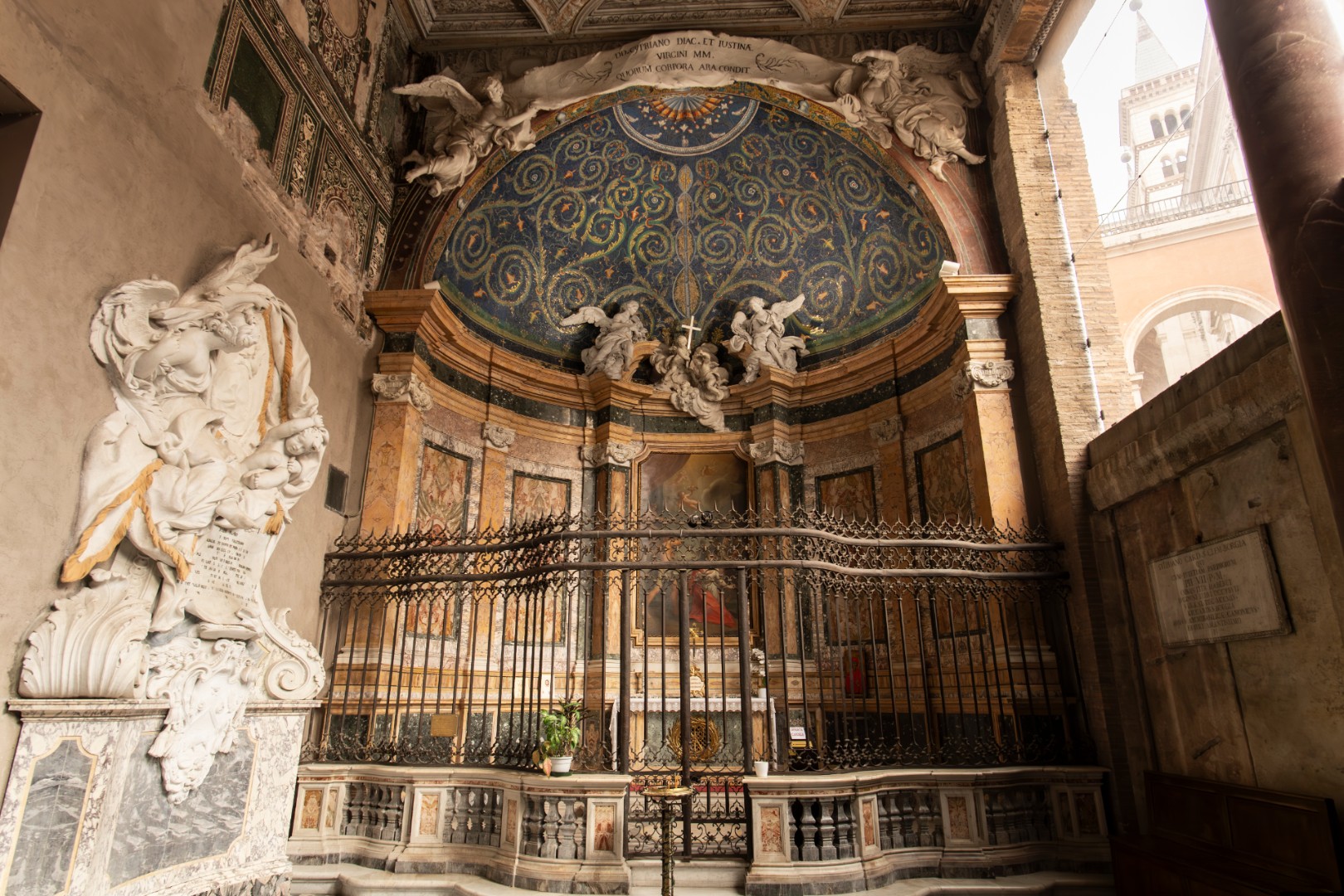The original entrance consists of a biapsidal pronaos, which appears in all its splendour when viewed from the outside, with the columns that were realized ex novo. It was then closed with slabs, and on them one can read, again from the outside, ancient pencil inscriptions by pilgrims from the Middle Ages.
The Constantinian age, the fourth century, was characterized by broad entry into the catechumenate – the word “catechist” indicates one who “echoed” the divine Word that comes from above, whereas the word “catechumen” is the passive form of the one who receives.
Just as Constantine was probably a catechumen whose Baptism was delayed despite his embrace of the Christian faith, so is it attested of other important figures who postponed their Baptism for a long time - the most famous are Ambrose and Augustine, but also Jerome, Rufinus and Paulinus of Nola and, in the East, Gregory of Nazianzus, Basil and John Chrysostom.
The pronaos was where the renunciation of the devil and the profession of faith in the Trinity was to take place, with the interrogative formula that represents the most ancient Symbol of faith.
As already attested to in the Acts of the Apostles, which tell of those who received Baptism “together with those of his household”, also in Rome those who decided to receive Baptism received it together with their children.
In the pronaos there are the two Chapels of the martyr saints Cyprian and Justine – with a fifth century mosaic of racemes, a hemicycle with the Lamb, four doves and small gemmed crosses - and of the holy virgins Rufina and Seconda martyred during the persecution of Valerian.



